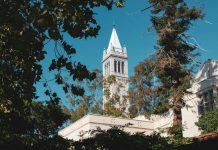
Attending university in the United States can still be a valuable experience for international students.
Back in the 1970s, anyone who studied at American universities was considered “elite” within the Asian society. According to Raymond Chua, junior in chemical engineering from Malaysia, studying in American colleges is still worth it when it comes to applying for jobs in Malaysia since it is a developing nation and there are not many well-known educational institutions there.
However, since Northeast Asian countries like South Korea, Japan and China have achieved economic developments recently, there are lots of employees in these three countries doubting the professional skills of international students who graduated from American colleges.
As the economy in these countries grew, the quality of their education also became increasingly better. So not all of their inhabitants think it is worthwhile to study in the States for four years, and some even claim that international students studying at American public schools escaped away from Northeast-Asian education systems because it is supposedly easier to get accepted into American schools.
However, they need to realize the fact that the curriculum at American universities is more difficult than Asian colleges, so students need to study harder if they decide to study in the United States, even though it is less difficult to attend.
In order to clarify the reason for international students’ motivation when it comes to applying for American colleges, I interviewed several Chinese and Korean students. Ziyang He, Ph.D. student in industrial engineering and manufacturing systems, said that some Chinese students apply for American colleges because the Chinese National College Entrance Exam, also known as the gaokao, is extremely difficult.
In addition, Jung Donghyun, a Korean student attending a Korean university, said he does not have a good impression from Korean students who went to American colleges because they all acquired low scores on the suneung or College Scholastic Ability Test, the South Korean college entrance exam, so it seems to him like they all escaped away from Korean education system.
Both Chua and Donghyun claimed that prestigious universities in Korea and China have less than 10 percent acceptance rates while American universities have very high acceptance rates. According to U.S. News, most U.S. universities accept more than 80 percent of applicants with the exception of Ivy League schools and several liberal arts colleges.
But the interesting fact is that most United States public universities are ranked higher than prestigious universities in Northeast Asia. According to the World University Ranking, the organization which rates reputations of colleges in all across the world, Iowa State University is ranked in 194, while Yonsei University, one of the best Korean universities, is ranked significantly behind Iowa State.
Even though Iowa State’s acceptance rate is almost nine times Yonsei’s, it has a higher ranking in regards to quality education. This shows that low acceptance rates are not necessarily crucial when it comes to evaluating academic reputations of colleges.
Park Yongsu, another Korean student attending one of the most prestigious Korean colleges stated that he could acquire a C+ even though he only did well in the attendance portion and did not participate in any other class activities.
Although it is extremely difficult to enter the colleges, students do not have to study very hard once they are accepted to colleges in Korea. There are typically only two exams per semester, and there are not many assignments compared to American colleges.
Because of this simplicity, very few students drop out of college, even though they are attending highly-ranked colleges in Northeast Asia. On the other hand, less than 70 percent of college students acquire bachelor’s degrees within six years at most four-year colleges in America because U.S. colleges generally require more schoolwork and experience before students can graduate.
Yat Chow Lee, junior in civil engineering at Iowa State, also said that college students can easily graduate from Northeastern Asian colleges without even focusing on their schoolwork. Because he wanted to improve his academic skills, he made the decision to transfer to Iowa State from his original school in China.
I agree that there are some international students who may have simply escaped from their own education systems, but those students have to work much harder than most students in Northeastern Asia to hone their skills if they hope to graduate. If international students have positive goals and attitudes involved with studying in the United States, lots of different opportunities will be provided from workplaces after graduation since they overcame such difficulties.
Therefore, comparing colleges only by acceptance rate is not a good idea since employers care more about how hard graduates studied in their major, not so much how they studied in high school. Although there are several international students who did not do well on university entrance exams, they still have the chance to improve their academic skills by starting a new chapter in the United States. It is more important to focus on the present rather than the past.
[작성: 김주헌, 편집: CalFocus 편집부]










